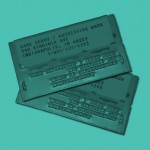We understand that a common challenge of all businesses, especially smaller ones, is that of cash flow. No matter how profitable a business, it requires increasing levels of working capital to support ongoing growth. The successful entrepreneur understands this need for cash and capital and takes steps to ensure it is available when needed.
 Increasing Cash Flow with the Right Merchant Services
Increasing Cash Flow with the Right Merchant Services
Many people think the only way to fund a small business is through incurring debt or selling equity. While both of these methods are common, we work with many creative entrepreneurs who find additional ways to help manage their cash flow. For those companies involved with ecommerce especially, efficient credit card processing services is just one of those tools.
The use of our modern POS systems helps business owners generate accelerated cash flow. We provide merchant services that facilitate all types of large and small business transactions, from retail to online payments. We also offer mobile merchant accounts that fit the needs of a wide range of businesses. Importantly, our systems help our clients minimize the common problem of chargebacks.
Low cost and dependable credit card processing are only part of what we provide to business owners who want to maximize cash flow. As a part of our package of progressive merchant services, we also offer different forms of advances and business loans for those who serve their customers with our state-of-the-art POS systems.
The advantages of these financing options are numerous. Instead of trying to get a loan from a bank and committing to a rigorous payment schedule, we accommodate our clients with convenient terms that automatically reduce the balance they owe based on the volume of business they do.
 Other Tips for Financing Your Business
Other Tips for Financing Your Business
In addition to debt, equity and the correct use of credit card processing services, the savvy business owner will focus on these key areas of managing working capital needs:
- Working with vendors. The longer you work with certain vendors, the better terms you can expect. It is important to set up your company’s financial accounting system to ensure you pay your accounts on time, building a strong credit history. Setting up a D&B account is part of this process. Depending on your industry, you can also work with vendors to smooth out seasonal peaks in buying and payment terms.
- Managing inventory. Today, there are many inexpensive inventory control systems to help keep inventory levels at the lowest level possible while meeting customer expectations. Many companies reduce their working capital needs by as much as 20 percent when they pay attention to inventory levels. This is especially important for companies with seasonal business or products that may go out of date. Clearing out excess inventory at cost is far better than letting it sit on shelves.
 Consider invoice factoring. Many companies today are turning to the concept of selling their invoices to a factor to improve cash flow. The great thing about factoring for a small company is that the factor looks at the credit worthiness of the company buying the products or services. These are often larger companies with established credit, allowing even a new business to sell their invoices quickly. While this can be an expensive route, it may be the right way to support growth for some companies. Over the long-term, factoring is preferable to some businesses wishing to avoid debt or selling shares in the company.
Consider invoice factoring. Many companies today are turning to the concept of selling their invoices to a factor to improve cash flow. The great thing about factoring for a small company is that the factor looks at the credit worthiness of the company buying the products or services. These are often larger companies with established credit, allowing even a new business to sell their invoices quickly. While this can be an expensive route, it may be the right way to support growth for some companies. Over the long-term, factoring is preferable to some businesses wishing to avoid debt or selling shares in the company.
Taking Care of the Basics
Companies must generate profits and have sufficient cash flow to survive and grow. Meeting customer expectations with quality service and professional credit card processing services are one of the basics for businesses today, especially those involved with ecommerce.
Delivering what customers expect will ultimately improve sales, reduce chargebacks and increase your ability to attract the type of financing you need for growth. Abtek’s POS systems are designed to help you provide that level of service and build the revenue you want and deserve. We also work with you to provide part of the financing you need as your growing base of charges shows you are taking care of business.




 In the 1930s and 40s, some stores issued charge plates to customers, perhaps the first example of semi-automated processing. These were simply small metal plates with a customer’s name and address engraved on the face. When a customer wanted to use their credit plate to make a purchase, a store employee would run it through a small machine that used an inked ribbon, sort of like an old typewriter ribbon, to make an impression on a sales slip with carbon copies.
In the 1930s and 40s, some stores issued charge plates to customers, perhaps the first example of semi-automated processing. These were simply small metal plates with a customer’s name and address engraved on the face. When a customer wanted to use their credit plate to make a purchase, a store employee would run it through a small machine that used an inked ribbon, sort of like an old typewriter ribbon, to make an impression on a sales slip with carbon copies.



